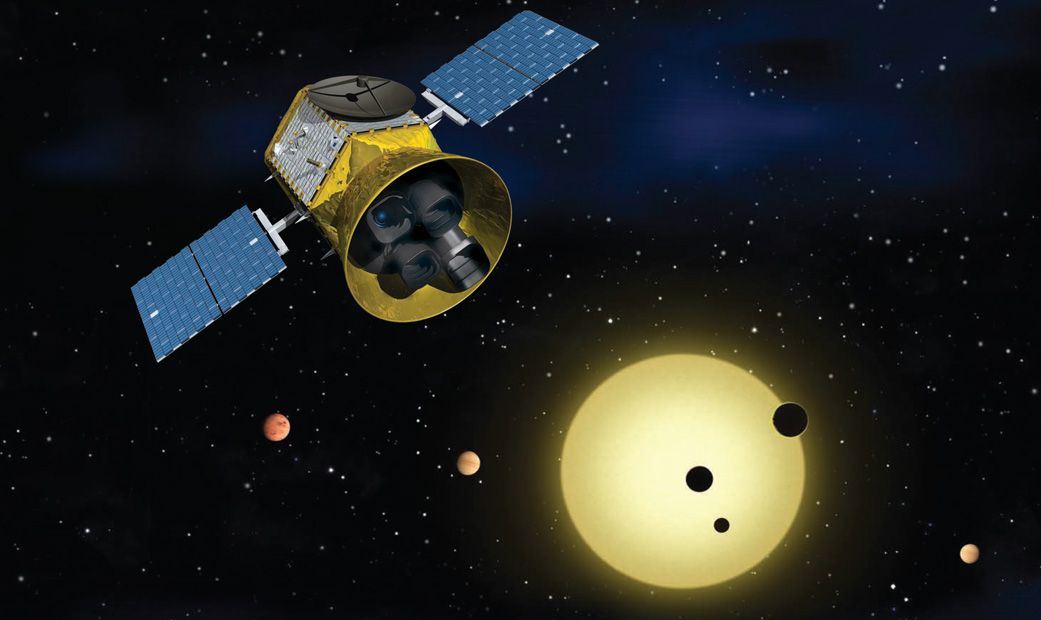
NASA's brand new space telescope, TESS, will spot planets orbiting other stars. But the start of this highly anticipated mission will have to wait one more month. The agency recently announced that the earliest possible launch date is April 16, almost a month later than previously scheduled. For TESS, slight delays on the ground mean longer delays in the mission starting for one intriguing reason: The instrument's launch must be aligned with the phases of the moon.
TESS—or, Transiting Exoplanet Survey Satellite—is currently undergoing its final preparations for launch at the agency's facilities in Florida, where it arrived on February 12. The launch was previously scheduled for a window beginning on March 20. But the telescope is hitching a ride on one of SpaceX's Falcon 9 rockets, and the company requested a delay to ensure all the launch details were in order.
One of the big challenges the team behind TESS faced while planning the mission was how to design that orbit. They wanted the telescope to fly pretty close to Earth so that it could send its data home quickly. That speed would give scientists truly fantastic images even with the wide fields of view of the cameras on board. But the instruments are highly sensitive to temperature variations, which meant that simply flying too close to Earth's clouds could skew its data.
.@NASA_TESS will undergo final check outs in this clean tent before being encapsulated in a @SpaceX Falcon 9 @NASAKennedy @NASA_LSP. pic.twitter.com/dRceAjnhlS
— NASA_TESS (@NASA_TESS) February 20, 2018
The solution was a dramatic orbit that swings from just above the many satellites plopped in place over Earth's surface out to the neighborhood of the moon. The side of the orbit hovering over the satellites will provide better data delivery and the moon side of the orbit will provide better observations.
In order to anchor the telescope on its path, it needs to approach the Moon in just the right way. To satisfy that requirement, the TESS launch needs to be carefully aligned to the phase of the Moon. The team has less than two weeks each month in which they can launch the instrument to land on its orbit correctly.
"If you don't choose the right phasing, then you can end up crashing into the Moon," George Ricker, an astrophysicist at MIT and principal investigator of the TESS mission, told Newsweek. "It's really hard to keep the orbit from impacting into the Moon or the Earth" within a few years.
Read more: Kepler Mission: 5 of the Most Incredible Discoveries From NASA's Alien-Hunting Spacecraft
That's why this delay pushed the launch a month—it needs to stay synchronized with the Moon's orbit around Earth.
Once TESS launches, it should be able to hold its tricky orbit for about a century, Ricker said. Of course, even with NASA's history of producing spacecraft that last much longer than they are required to, it's unlikely TESS will actually keep working that long.
Uncommon Knowledge
Newsweek is committed to challenging conventional wisdom and finding connections in the search for common ground.
Newsweek is committed to challenging conventional wisdom and finding connections in the search for common ground.
About the writer
Meghan Bartels is a science journalist based in New York City who covers the science happening on the surface of ... Read more
To read how Newsweek uses AI as a newsroom tool, Click here.








